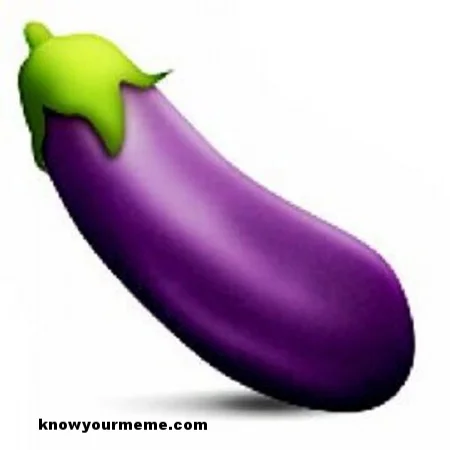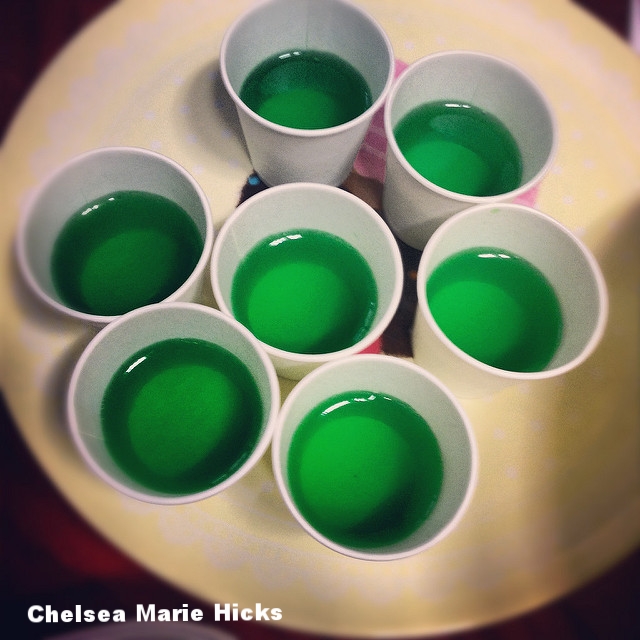KC 128 - Grilled Mediterranean Salad

Why hello there, and welcome, once again, to Kitchen Catastrophes, where…we’ve been mainly meat focused of late, haven’t we? A month of meat-based dishes, and a seasoning post that still used said seasoning ON two meat dishes. Again, I’m falling back into what I’ve dubbed Sexy Food Syndrome: meat, as a protein, is ‘sexy’, and therefore It’s easy to generate interest in. Veggies are less “sexy”..though, I guess, more sexual.
Remarkably few people are texting about wanting baba ghanoush at 2 in the morning.
Anyway, while I’ve been griping about my recent interactions with my doctor of late, one of the recommendations he made for me was to try a Mediterranean Diet. More veggies and white meats, more nuts and oils, fewer animal fats and starches. Today’s recipe dabbles with that dietary ideal, with…results. Let’s learn more. If you’ve already heard this one before, you can skip straight to the recipe with this link.
On the Wine-Dark Sea of the Aegean
Quick geographical and historical explanation, for those who’ve long since forgotten their middle-school classes. The Mediterranean is the sea that sits between the south of Europe and the north of Africa, and was the centerpiece of the Ancient World. And when I say ‘the Ancient World”, I mean…well, “the civilizations and peoples who surrounded the Mediterranean”. If that sounds kind of redundant to point out, I do it to spite Victorian Historians for having one of the better “time-period/profession” rhyming schemes. Much better than “Revolutionary Dignitaries.”
Pickney over here got lucky that he was a better dignitary than a soldier.
In case you’re unaware, historians back then were kind of snobs, and focused mainly on the Ancient Greeks, Romans, and Egyptians as the empires worth discussing and researching, and to an extent, even respecting. This was because, well, they were biased. And not wholly in a bad way. See, Victorian historians were in the midst of what some would consider the height of the British Empire, one of the largest empires in the history of Western Civilization. So it’s somewhat natural for them to have focused on the works of their predecessors in Western Civilization, the Romans and Greeks. There’s nothing wrong with that. Understanding the forces that brought your nation and your neighbors to here is a valid and fine sentiment.
The “issue” comes when they then dub that region the “ancient World”, thus implicitly denying the relevance of the empires in Asia, Subsaharan Africa, South America…anywhere EXCEPT the countries all gathered around a sea that’s smaller than the country of Algeria. This is not unlike, to take a not-at-all controversial option, looking at what life was life for YOUR specific family members in America 200 years ago, and then declaring that the ‘typical’ experience. And if you don’t see the issue with that, then I think you’re forgetting about slavery.
Just like, 20 years ago, too many forgot about Dre.
It’s not quite the Victorian Historians’ fault, however. The Mediterranean is basically NAMED after how important it was to that region. Maybe. The Greeks called the sea… “the sea” or “the Great sea’ or “the surrounding sea”. Rome called it similarly simple names “the Great Sea”, the “internal Sea” once they learned the Atlantic existed, or “our sea”. It wasn’t until around 300-600 AD that we see “Mediterranean”. And the name has two potential explanations. It means, rather directly “that which is in the middle of the land/Earth”. You can see the issue. Either this just means “the inland sea” or it means “The Sea in the Middle of the World”, depending on how we’re meant to read “terra”.
I read it TRAITOR.
Geography aside, recently, the Mediterranean Diet has sprung up as a particularly well-regarded diet in the medical field due, at least in part, to a 2013 meta-analysis of the various effects of different dieting strategies. (A “meta-analysis”, despite sounding like a government program in a superhero show, is simply the term for “looking at and comparing multiple scientific studies”.) The analysis didn’t conclude that any one diet is best, but it noted that the Mediterranean Diet was particularly good at combating heart disease and obesity, both notable issues in modern American healthcare.
The reasons why are complicated, and at least partly tied to a…quirk of American consumption. Namely that America is much larger, physically, than a lot of countries, and a greater proportion of that land is arable. In short, America makes a LOT of food. It’s why beef caught on so strongly in America: cattle need a ton of space to graze and raise, so they were very expensive to eat before America and Australia started producing it. This idea, that meat was plentiful in America, caused a sort of cultural fixation with it. In many cultures, it wasn’t unusual to have meat at only one meal a day, and red meat even less frequently. It was a luxury, a “for special occasions” dish. In America, you could get it EVERY DAY, for relatively cheap!
Heck, you can get beef sandwiches cheaper than fruit, these days.
As such, America became a land of bounty, of big meals and rich dishes…which then led to a lot of obesity and heart issues. Turns out living like kings tends to make you fat as Henry the eighth.
BUT ENOUGH OF THAT, LET’S TALK ABOUT THE DISH ITSELF.
It’s Time for Salad to get Rad
Now, I know that last week, we JUST covered a salad made mainly of meat, but I don’t want that fact to undercut the following generalization: in America, when people say “salad”, they tend to picture a bowl of leafy greens with add-ons and a dressing. And the dressing is, funnily enough, historically important.
The word Salad comes from Latin, via French (salata to salade to “salad”) and literally translates to “salty” or “salted”. Why? Because it was listed as “_____ salad”, and referred to the dish being tossed in a salty vinaigrette or dressing.
Oh those salty Romans
Technically speaking, a salad without dressing is just a bunch of vegetables. And also, a salad BASED on vegetables, especially leafy greens, is technically a “garden salad”, which is the aforementioned first thought of Americans.
This tactic is not universal, however. Noodle salads are popular, as are potato salads, and meat salads. Even in the vegetable world, there’s nothing that stops you from making salads that don’t have a speck of green in them. Unless it’s St Paddy’s Day, of course.
When even the drinks need must be green.
Today’s salad dabbles with that idea, in that, while there is green, it comes in the form of zucchini, and herbs in the dressing. The two major players in the dish, however, are purple. Radicchio and Eggplant.
Radicchio, which I keep trying to spell wrong, (It’s double Cs, Jon’s brain. Not double Ds. STOP SNIGGERING BACK THERE, Dirty Joke Jon!) despite looking basically like Red Cabbage, is actually a chicory. Chicories are a branch of bitter leafy vegetables, related to dandelions. Radicchio and Endive are the big members of the family, though wild chicory is also eaten. The buds and roots of the plant are also ground up to make a coffee substitute, so that’s roughly the level of bitterness we’re talking about.
Yep, she's a bitter little beauty.
Eggplant, on the other hand, is a complicated little beastie. It’s one of the most widely varying shaped, and NAMED veggies bouncing around. Eggplant is also known as aubergine, and berenjena, mad-apple, guinea squash, and more around the world. And while it USED to actually look like an egg, with an oval fruit of cream color, now it’s predominantly purple. Some are fat, some are thin, it’s a whole mess. Anyway, raw eggplants can be somewhat bitter as well, which is why we’re grilling everything: to reduce the bite of our bitter bits.
And if you think the veggies are weird, then let me tell you, the REST of the salad…actually isn’t all that strange. Really, it’s just veggies, vinaigrette, and cheese. But not just ANY cheese, oh no! No, today we finally return to our grilled gustatory companion of halloumi! Halloumi, as we discussed in the Grilled Fruit and Cheese post, is a Greek Cheese (Cypriot, if you want to be truly pedantic, and when don’t I?) whose firm texture lends to it cooking really well on the grill! The best part is, it’s available in your local grocery store! Let me just pop over to the Fred Meyer’s, and…oh, they’re sold out at the moment. That’s fine. It happens. To SAFEWAY! …Where they don’t have it either. What the hell? This stuff WAS widely available like, a week ago! What the deuce is going on?
Well, since that cheese is missing, I’m going to have to find a substitute. Quick google search for what cheeses grill well…halloumi, duh…kefalotyri? I’ve never heard of that. …”Grilling Cheese”? Thank you for that. … Paneer would be good, but no one near me carries it... Provolone? Alright, I can get Provolone. And Queso Panela. Sure. Okay, two cheeses. We’ll see which one is more like halloumi.
Pro-tip, Pro-volone, This isn't a great reaction.
As the picture implies, the Provolone didn’t go so good. Specifically, re-reading the list I snatched it from, it was NEVER going to go very well: You grill provolone just to get the smokiness into it. You only actually grill it for like, 2 minutes. Ours left a heck of a mess, and the resulting cheese had an unusually sharp metallic taste.
The Queso Panela did better…but I was busy dicing all the grilled veggies, so I don’t have a picture of it. Well, that’s not true. I have a picture of it BEFORE we heated it.
Simply stunning food photography.
We actually didn’t grill this one either, instead frying it in a skillet, but the results make me feel a grilling venture wouldn’t go too poorly. IT had a nice mottled brown crust over soft white interior. It was a little softer than most grilled cheeses/griddled cheeses, but overall pretty nice.
The vinaigrette was a mixture of honey, lemon juice, olive oil, and thyme. More thyme than actually called for, technically. See, we didn’t buy fresh thyme for the dressing because we knew we were growing some. What we didn’t know is that we were only growing a LITTLE. We had to supplement with dried thyme, and I didn’t remember that dried herbs are stronger than fresh until we’d already mixed it up.
Seen here being whisked to hide my shame.
IN the end, however, we grilled a bunch of veggies, a couple cheeses, and tossed it all with a vinaigrette. The results weren’t too bad to look at!
Honestly, it's pretty...pretty. Damn. Internal thesaurus isn't on yet. too early.
But that marks the peak of our performance, sadly. I thought the salad was “okay”. Nothing particularly special. Saltiness from the cheese, sweetness from the honey, and a lot of bitterness from the veggies. My mother noted that she thought it was fine except for the radicchio. My brother outright didn’t like it. He THINKS it was the vinaigrette he was most against, or maybe the way it interacted with the bitter veggies, but the dish as a whole got a firm pass from him. I’ll probably try it again, with a different dressing, to see if it’s more to Nate’s liking then, or if it’s some other component that sickens him. Because painful experiments are what we’re all about, around here!
In order to help keep Jon’s culinary laboratory running despite the express command of the United Nations ,consider supporting us on Patreon! If you don’t wish to make a fiscal enemy of the IMF, but still want to be a firebrand for the cause, then sharing our posts on social media, liking our facebook page, and inviting your friends to do the same will soon show those fatcats what REAL mad science looks like!
THURSDAY: YOU KNOW WHAT? I’M FEELING LIKE DIGGING DEEP ON HISTORY THIS WEEK. LET’S DO THE CURRENCY CROP PHENOMENON. WHAT DOES THAT MEAN? TUNE IN TO FIND OUT.
MONDAY: I ONLY PREPPED 2 RECIPES BEFORE COMING TO LEAVENWORTH, AND HAVE NO IDEA WHERE THE ACTUAL RECIPE FOR 1 OF THEM IS. SO WE’RE BACK TO ASIAN FUSION, BY WAY OF CALIFORNIA, FOR THE SOUP THAT EATS LIKE A MEAL: RAMEN BURRITO!
Recipe
Grilled Mediterranean Salad
Serves 5-6
ingredients
Dressing
3 tbsp honey
1 tbsp minced fresh thyme
½ tsp grated lemon zest
3 tbsp lemon juice
1 garlic clove, minced
1/8th tsp Salt and 1/8th tsp Pepper
2 tbsp olive oil
Salad
1 lb eggplant, sliced into 1/2-inch rounds
1 (10 oz) head radicchio, quartered
1 zucchini, halved lengthwise
1 (8 oz) block of halloumi, or other suitable grilling cheese, sliced ½” thick
2 tbsp olive oil
Preparation
1. Preheat your grill to high, and whisk together all dressing ingredients. While grill is heating, brush salad ingredients with oil, and season with salt and pepper.
2. Reduce grill to medium heat. Thoroughly clean and oil your grill grate. Place salad ingredients onto grate, and grill, turning as needed until softened and lightly charred. Remove the radicchio after 3-5 minutes and the rest of the ingredients after 10 minutes.
3. Let ingredients cool slightly before chopping into 1” chunks. Re-whisk dressing, adding olive oil (added late to avoid separation while grilling). Toss grilled vegetables and cheese in dressing to coat, salt and pepper to taste, serve warm.

















